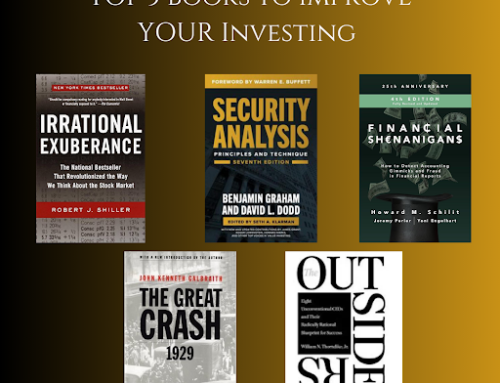In the realm of investing, selecting the right companies for your portfolio can often seem like a daunting task. However, financial ratios provide powerful tools to simplify this process. Among the myriad of ratios available, four stand out for their efficacy and insight: Price-to-Earnings (P/E) Ratio, Operating Margin, Cash Conversion Cycle, and Return on Invested Capital (ROIC). This article will explore each of these ratios and determine which one is the most effective for identifying high-potential investments.
1. Price-to-Earnings (P/E) Ratio
The P/E ratio is one of the most commonly used financial metrics. It is calculated by dividing the current market price of a stock by its earnings per share (EPS). This ratio provides a snapshot of what the market is willing to pay today for a dollar of earnings.
Strengths:
Simplicity: The P/E ratio is straightforward and easy to understand.
Limitations:
Earnings Manipulation: Earnings can be manipulated or affected by accounting policies, making the P/E ratio less reliable.
Growth Considerations: The P/E ratio does not account for future growth prospects and can be misleading if not considered alongside growth expectations.
2. Operating Margin
Operating margin is a measure of profitability and is calculated by dividing operating income by net sales. This ratio indicates what percentage of revenue is left after covering operating expenses, excluding interest and taxes.
Strengths:
- Profitability Insight: Provides a clear view of how efficiently a company is being managed.
Limitations:
- Asset Turnover Dependency: Operating margin should be considered alongside asset turnover to get a complete picture of efficiency.

3. Cash Conversion Cycle (CCC)
The CCC measures how quickly a company can convert its investments in inventory and other resources into cash flows from sales. It is calculated as the sum of days inventory outstanding, days sales outstanding, and days payable outstanding.
Strengths:
- Cash Flow Insight: Provides an understanding of how efficiently a company manages its working capital.
- Operational Efficiency: Highlights the efficiency of a company’s production and sales processes.
Limitations:
- Complex Calculation: Requires detailed data and can be complex to calculate accurately.
4. Return on Invested Capital (ROIC)
ROIC measures the return a company earns on the capital invested in its business. It is calculated by dividing net operating profit after tax (NOPAT) by invested capital. ROIC is particularly valuable because it indicates how well a company is using its capital to generate profits.
Strengths:
- Value Creation Insight: Directly measures a company’s ability to create value for shareholders.
- Long-Term Indicator: Strongly correlates with long-term share price growth.
Limitations:
- Data Intensive: Requires comprehensive data to calculate accurately.
- Future Projections: Estimating future ROIC can be challenging and requires a deep understanding of the business and its industry dynamics.
Which Ratio is the Best?
While each of these ratios provides valuable insights, ROIC stands out as the most comprehensive and informative ratio for long-term investors. ROIC measures how effectively a company uses its capital to generate profits, directly linking to value creation and long-term growth potential. High ROIC indicates a strong competitive advantage, efficient capital use, and potential for sustained growth in shareholder wealth.

For example, a company with an ROIC of 25% suggests that for every Rs100 invested, the company generates Rs25 in return. Over time, this high return on capital can lead to significant compounding and potentially transform a modest investment into a multibagger.
In conclusion, while P/E ratio, operating margin, and cash conversion cycle each offer unique insights, ROIC emerges as the superior metric for identifying high-quality investments. It provides a holistic view of a company’s ability to create value and sustain growth over the long term. By focusing on ROIC, investors can make more informed decisions and potentially achieve higher returns.
For investors seeking to build a robust portfolio, understanding and applying ROIC alongside other key financial ratios can significantly enhance their investment strategy and success. In our Masterclass we teach how to calculate these ratios and how they can help you pick potential stocks.










